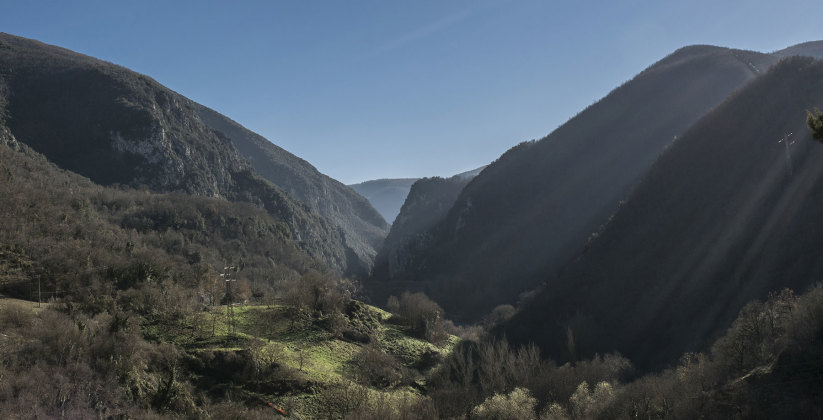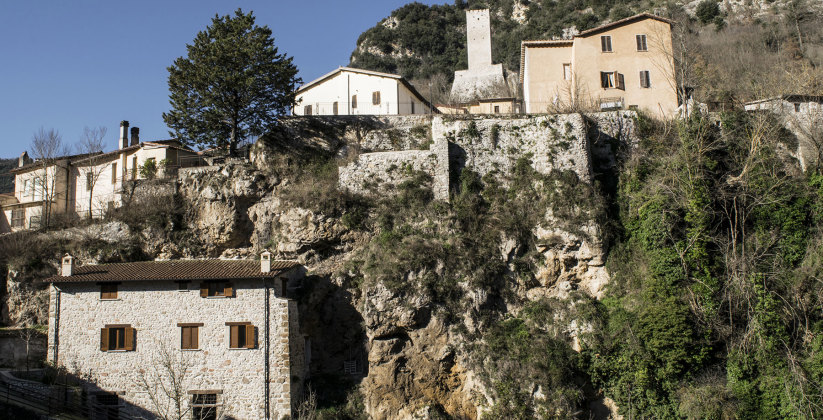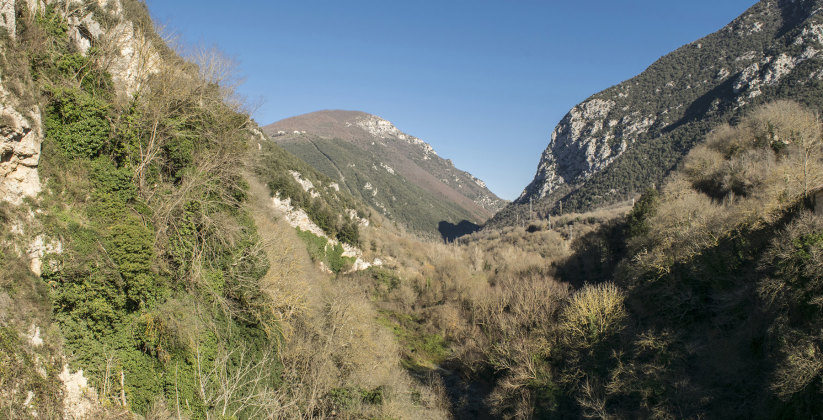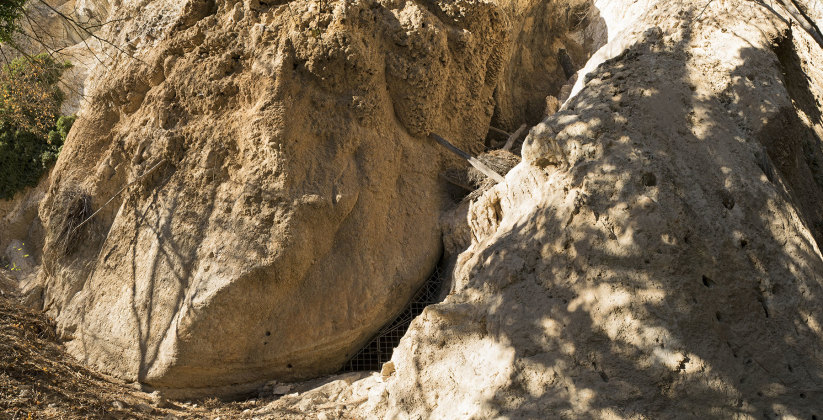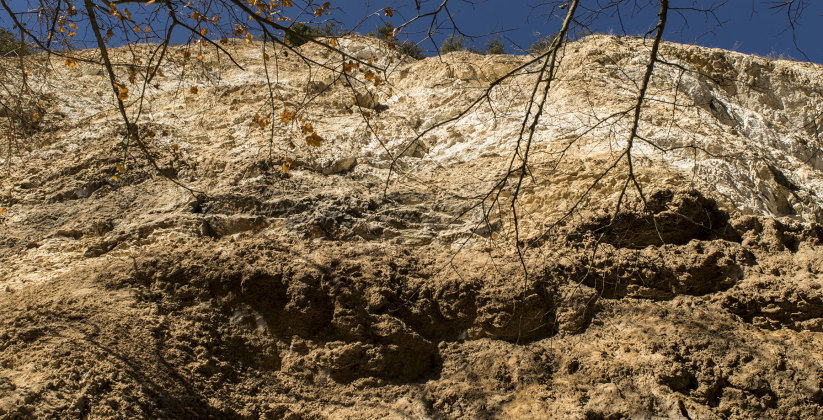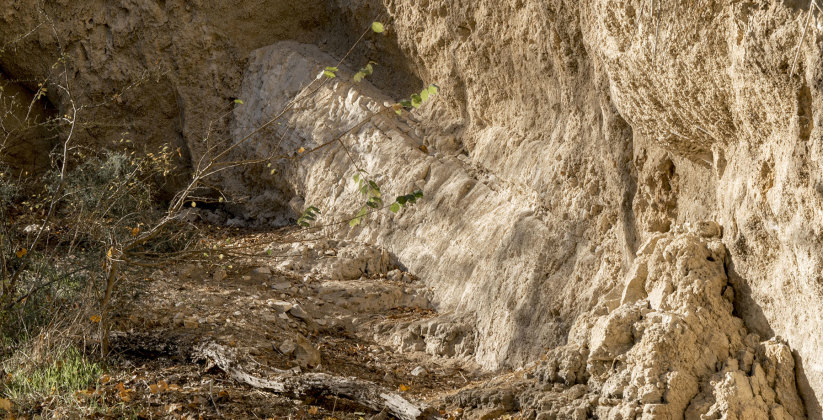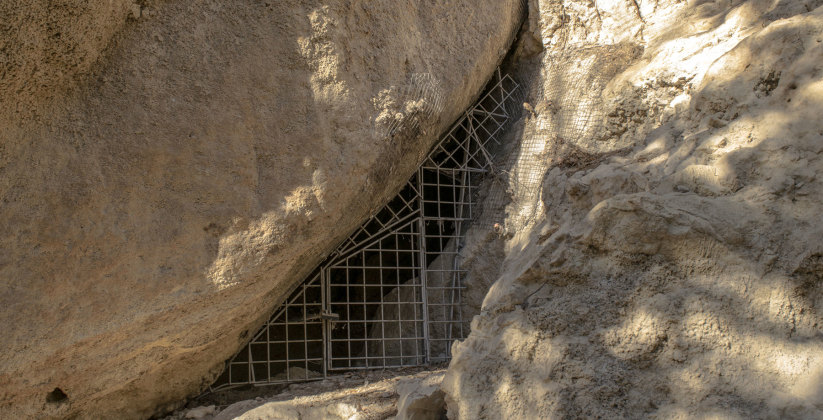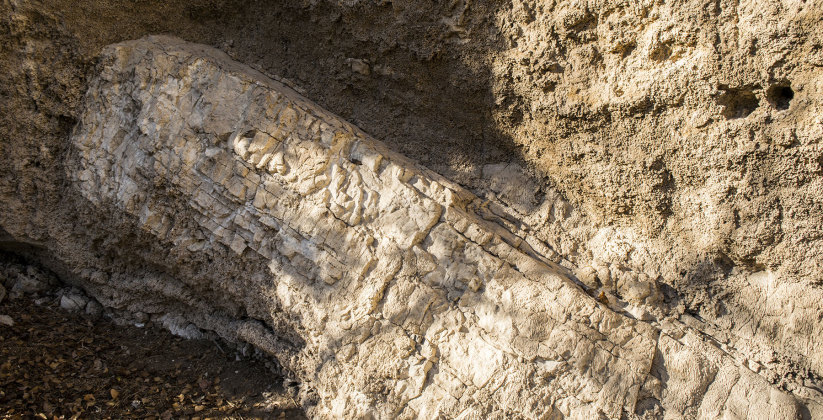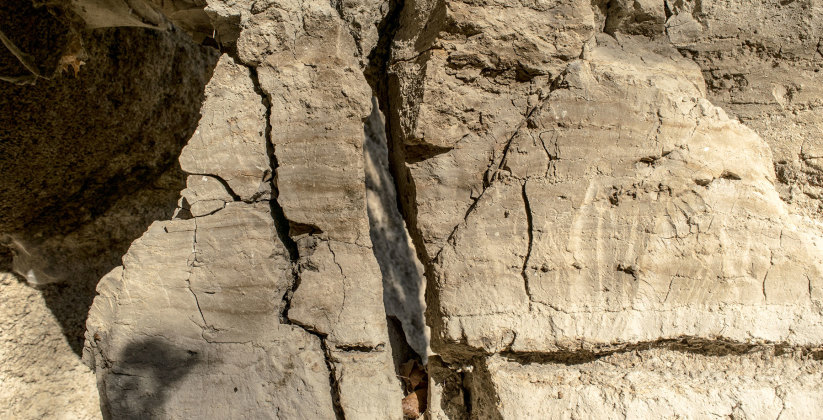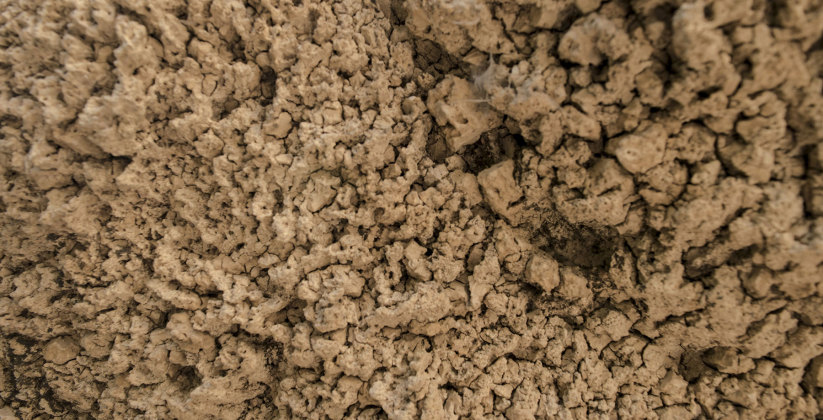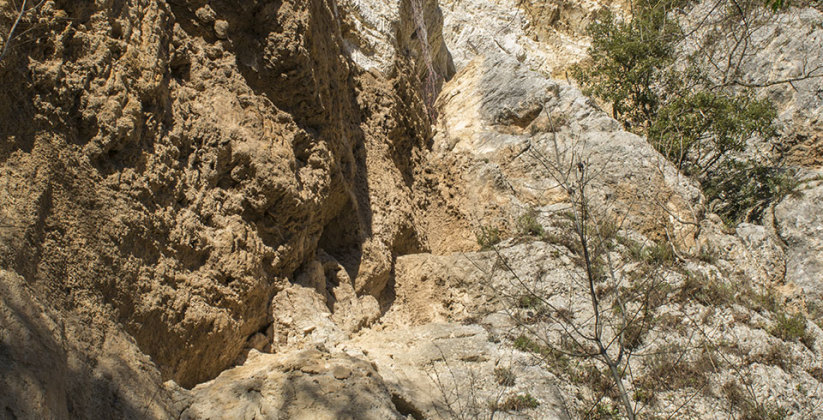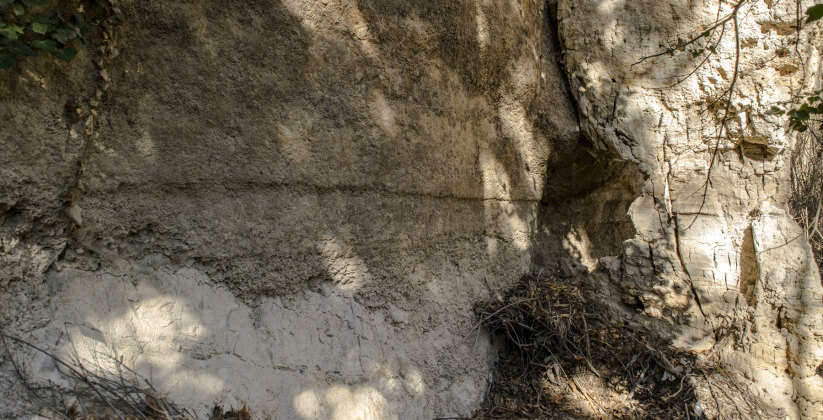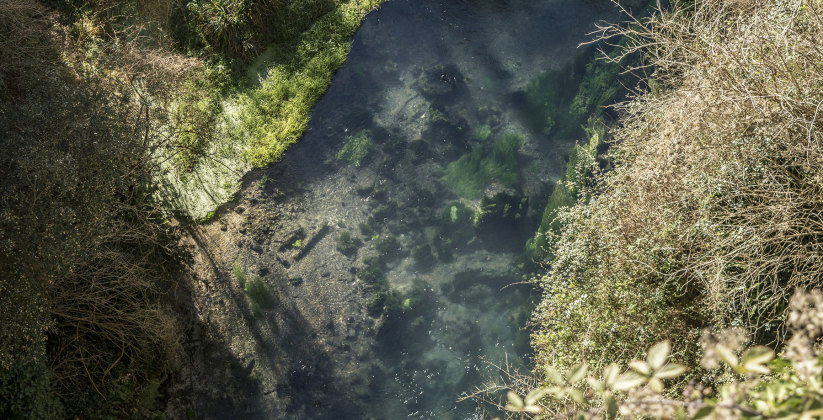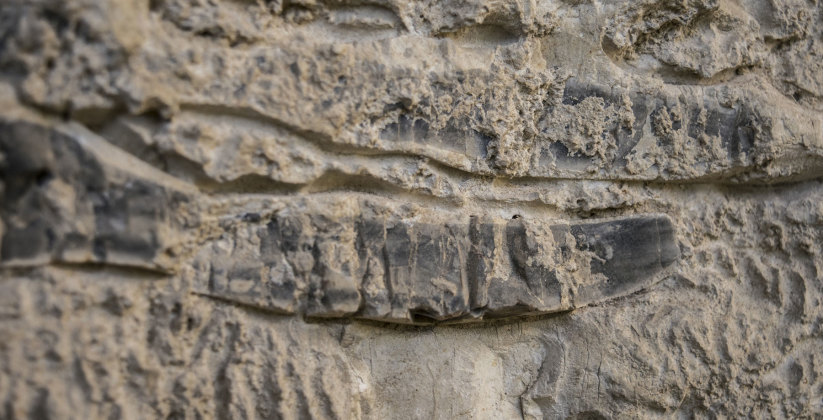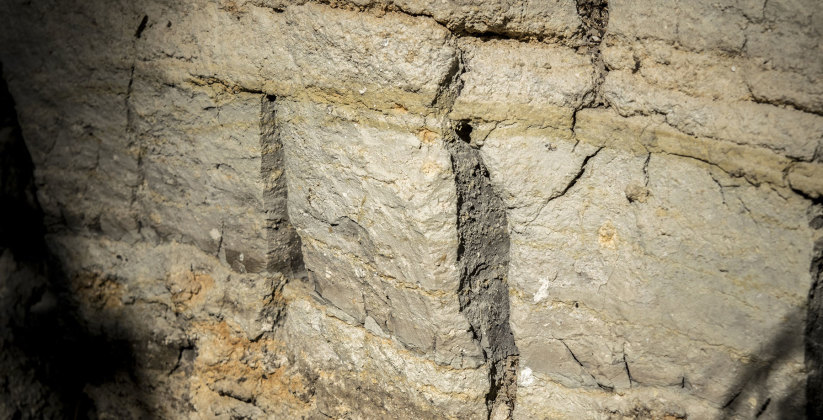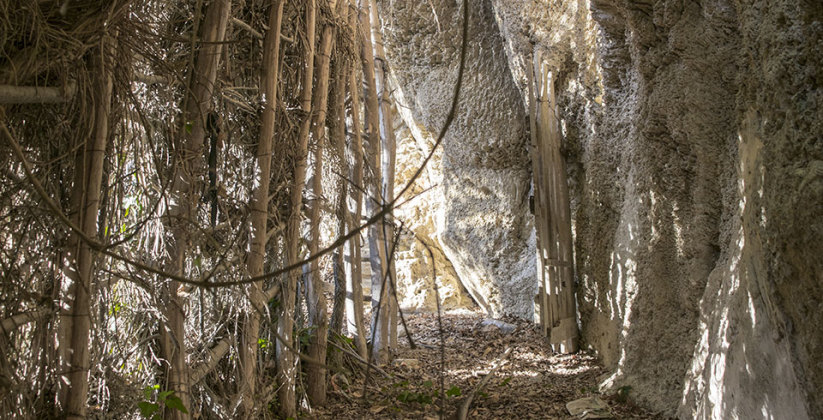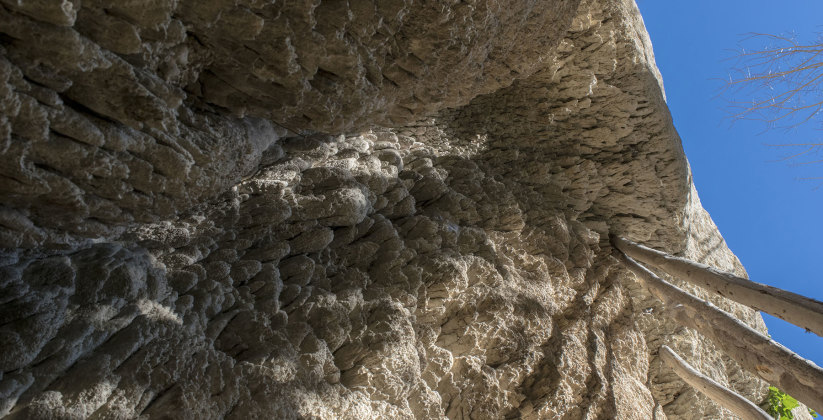Descrizione
Triponzo si trova lungo la SS209 Valnerina tra il km 48 e il km 49. La Grotta del Lago è raggiungibile percorrendo il sentiero che porta da Triponzo a Bagni di Triponzo (sentiero benedettino 501 e Sentiero 9A della Greenway del Nera). Tratti del sentiero sono parzialmente esposti. Si consiglia di indossare scarpe adatte e prestare attenzione se il fondo è bagnato.
Triponzo is on the SS209 Valnerina between kilometer 48 and 49. The Grotta del Lago is accessible walking along the path that goes from Triponzo to Bagni di Triponzo (Benedictine path 501 and 9A path of Nera Greenway). Part of the road is partially exposed. We recommend wearing suitable shoes and taking caution of the wet floor.
TRAVERTINO DI TRIPONZO
Triponzo sorge su un banco di travertino, presente su entrambi i lati della valle nel punto di confluenza tra i fiumi Corno e Nera. Il travertino si è formato in due fasi distinte. I depositi più antichi (Pleistocene superiore), che raggiungono quote più alte rispetto a quella del paese, si sono formati per precipitazione di carbonato di calcio su piante acquatiche e ripariali, le quali, in seguito a disfacimento post-mortem hanno conferito porosità ai travertini (t. fitoermali). Una fase più recente (Olocene), alla base della rupe di Triponzo, è costituita da ghiaie, sabbie calcaree e frammenti di piante ricoperte da carbonato di calcio (t. fitoclastici), alternate a banchi di t. fitoermali.
GROTTA DEL LAGO
La Grotta del Lago si è formata all’interno di rocce calcaree giurassiche, in seguito a fenomeni carsici impostatisi lungo una faglia diretta. Attualmente presenta due ingressi principali: uno ubicato a livello del sentiero; l’altro circa 7 m più su rispetto al primo. Durante il Pleistocene-Olocene uno sbarramento di travertino si formò a valle della grotta, creando un lago. ll livello del lago si innalzò nel tempo, finché la grotta venne riempita da sedimenti prevalentemente argillosi circa 4000 anni fa. Successivamente, i fiumi iniziarono ad intagliare i loro letti nei sedimenti olocenici fino a raggiungere il presente livello, circa 50 metri più in basso. Nei pressi della grotta sono presenti spettacolari concrezioni carbonatiche sul substrato roccioso, che si sono formate nell’Olocene. Scavi archeologici nella grotta hanno permesso di rinvenire all’interno dello strato basale due scheletri umani con corredi funerari di età neolitica.
TRAVERTINO DI TRIPONZO
Triponzo rises on a travertine bank that is on both sides of the valley at the joining point between Corno and Nera river. Its travertine was formed in two different stages. The oldest deposits (Late Pleistocene) are present up to the top of Triponzo cliff. They were formed principally by precipitation of calcium carbonate on the aquatic and riparian plants, which after post-mortem dissolution conferred porosity to the travertine (phytohermal t.). In a more recent phase (Holocene), the travertine present at the base of Triponzo cliff was formed out of gravel, calcareous sand and fragments of plants covered by calcium carbonate (phytoclastic t.), alternated to banks of phytohermal t.
GROTTA DEL LAGO
The Cave was formed inside calcareous Jurassic rocks after karstic phenomena developed along a normal fault. Nowadays it has two entrances: one on the trail level, the second 7 mt higher. During the Pleistocene-Holocene a barrage of travertine is formed downstream of the cave, creating a lake. The lake level is raised over time, until the cave was filled with clay sediments around 4000 years ago. Consequently the rivers started to carve their beds in the Holocene sediments until reaching their actual level, about 50 mt lower than before. Archeological excavations revealed two human skeletons with grave goods of Neolithic age in the cave.
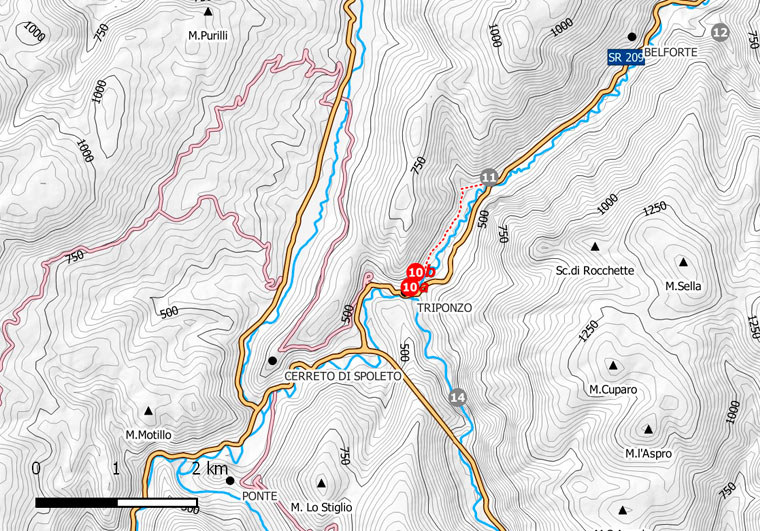
Video
Classificazione
- Area F.Nera
- Tematica Sedimentologia
Localizzazione
- LatitudineTRIPONZO 42°49’40’’N // GROTTA DEL LAGO 42°49’46’’N
- LongitudineTRIPONZO 12°56’15’’E // GROTTA DEL LAGO 12°56’18’’E
- Quota MaxTRIPONZO 430 // GROTTA DEL LAGO 430
- IGM serie 25324 II
- CTR324160

